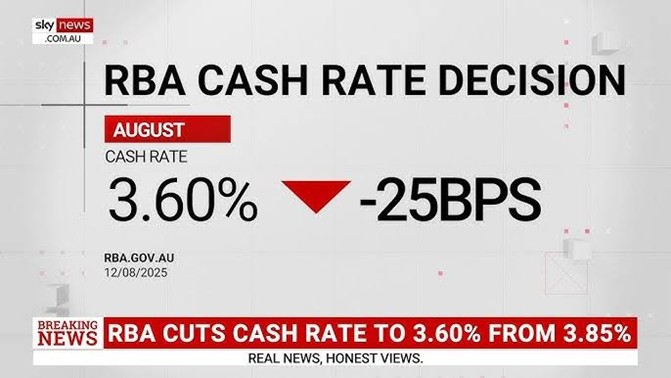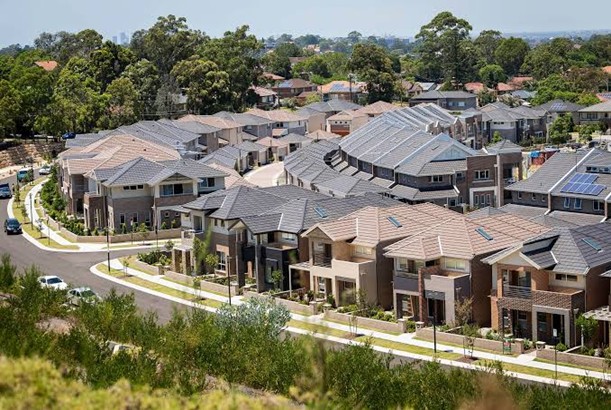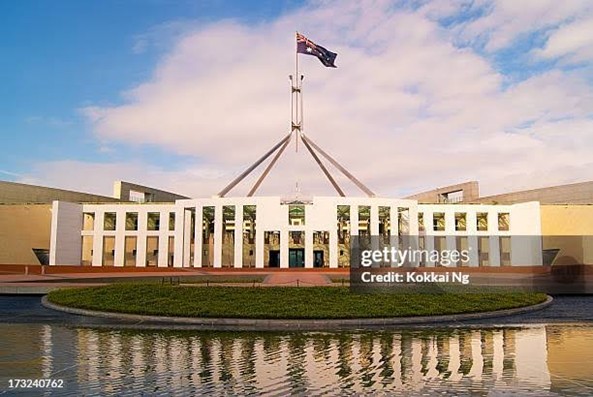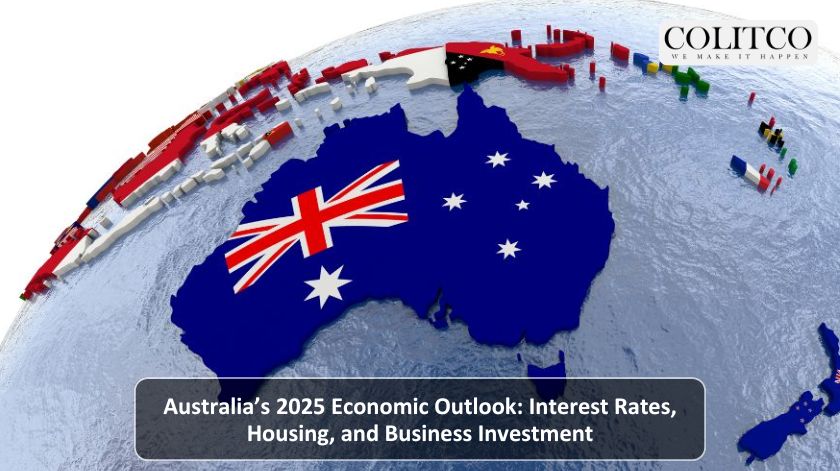Are interest rates finally easing for households and firms?
In August 2025, the Reserve Bank of Australia (RBA) lowered the cash rate to 3.60%, marking a turning point after a long stretch of high borrowing rates. The central bank highlighted easing inflation and a cooling job market as confident reasons behind its decision.
Markets expect the RBA to behave cautiously, as economists anticipate rates to approach 3% in 2026. While the phase of aggressive tightening has ended, the RBA emphasised that further actions will be data-dependent.
Unemployment is expected to average 4.2% throughout 2025, indicating stability after the fluctuations in previous years. This consistent employment is somewhat reassuring, although wage growth is slow.

RBA cuts cash rate to 3.60% in August 2025, easing borrowing costs.
Inflation cools, but household budgets remain stretched
Compared to 2022, Australia’s inflation has markedly declined. For the June quarter, headline inflation stood at 2.1%, and the trimmed-mean rate was 2.7%. Both of these numbers are within a comfortable range for the RBA’s 2–3% target band, which is reassuring news.
However, there is no direct impact on household comfort. Although temporary energy rebates and lower fuel prices have eased some costs, these measures are set to end in 2025. The RBA has indicated that inflation may rise once the rebates are removed but will subsequently decrease.
This directly impacts households in that they will face persistent inflation in living expenses for a longer duration, thereby restraining consumer expenditure even as borrowing becomes less expensive.
How severe is Australia’s housing affordability challenge?
Outlook 2025 Australia identifies housing affordability as one of the greatest economic challenges, with core data revealing that servicing new mortgages now requires approximately 50% of household income. On average, it takes 10.6 years to save for a 20% deposit, which is an all-time high.
The dwelling value-to-income ratio is 8.0, marking a rise from historic averages. Renters suffer equally, with rents surging 48% in the decade to March 2025.
Stretched affordability persists despite rate cuts, and continues to exclude a large number of first-home buyers from the market. Slow wage growth and high property values make home ownership increasingly elusive.

Housing affordability worsens in Australia, with deposits taking 10.6 years to save
Housing prices stabilise but remain city-specific
According to CoreLogic, year-on-year growth in housing value is still positive in most capital cities. Nevertheless, the rate of increase is slower than in 2024, and analysts forecast that, in 2025, growth will be moderate on a national scale.
Given their population growth and tighter supply, Brisbane, Adelaide, and Perth are cities likely to do better, while Sydney and Melbourne are expected to do worse because of softer conditions and affordability dragging on demand.
An investor’s location-specific tactical approach is still required for the regions that continue to see strong housing demand with a constrained supply.
Policy shifts reshape housing and foreign investment
To redirect demand from new housing construction, the Federal Government enacted a two-year foreign purchaser ban on established dwellings from April 2025 to March 2027. This ban complements the ban on new dwellings. To complement this ban, the Government revised the foreign investment fee schedules for 2025–26, increasing fees on speculative investments. Although these measures might reduce demand pressures, specialists insist that without a serious increase in housing supply, any improvements in affordability will be minimal. The challenge lies in boosting construction capacity and approvals to meet rising population demand.

Federal Government bans foreign purchases of existing homes from April 2025 to March 2027
Business investment and small enterprise policies show green shoots
The services and construction sectors appear to have boosted the Australian business landscape in the last few months. Firms are showing increased optimism, and businesses are supported with lower interest rates and shrinking cost burdens, as indicated by the NAB Business Survey.
The Australian government appears to be doubling down on efforts for small businesses. In addition to the grants for innovative small and medium enterprises offered under the Industry Growth Program, the Future Made in Australia Innovation Fund is offering clean-tech and energy-transition funding of up to $1.5 billion.
Small and medium enterprises investing in new machinery and technology continue to receive support with the $20,000 instant asset write-off, which remains in effect for the 2024-25 tax year. The rest of the policies are designed to improve productivity, foster innovation, and draw new overseas capital to targeted industries.
Investor outlook: cautious optimism in 2025
The rest of the Australia 2025 outlook raises several concerns. While the RBA is keeping inflation in check, unemployment holds steady, and enterprises enjoy gradual progress, the GDP growth estimate of 1.6 — 1.7% for 2025 reflects persistent difficulties.
Investors should consider sectors that not only stand firm against affordability issues but also receive funding from the government. Companies in construction with a solid pipeline, clean-energy innovation firms, and small and medium enterprises driven by tech stand a chance to do well. While the broader environment looks better compared to the last few years, again, balance on the fine line is very much necessary.
Also Read: US Stock Market Climbs on Rate Cut Optimism and Economic Data
FAQs
Are House Prices Predicted To Drop in 2025?
A sharp decrease is not in the forecast. Analysts are predicting slight gains on a national level, but the results on a city level might differ. Capitals with major cities will have growth capped because of their lack of affordability.
What Support Is Available for Small Businesses In 2025?
Small and medium enterprises are eligible for the Industry Growth Program, the Future Made in Australia Fund, and the $20,000 instant asset write-off, which is still available for the current tax year.
What Is the Impact of the Foreign-Buyer Ban on Housing Demand?
The ban blocks foreign buyers from buying existing houses until 2027. The effectiveness of the ban is contingent on whether housing construction increases to satisfy the demand.












